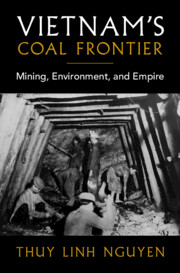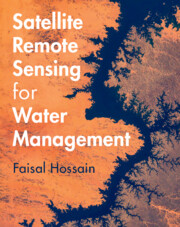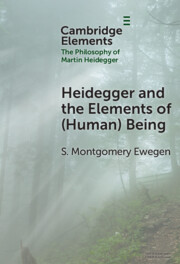Refine search
Actions for selected content:
421 results
7 - Coal, Water, and the Limits of Colonial Environmentalism
- from Part II - The Coal Regime during the Boom Years and an Environment at Stake
-
- Book:
- Vietnam's Coal Frontier
- Published online:
- 25 October 2025
- Print publication:
- 13 November 2025, pp 192-227
-
- Chapter
- Export citation

Vietnam's Coal Frontier
- Mining, Environment, and Empire
-
- Published online:
- 25 October 2025
- Print publication:
- 13 November 2025

Satellite Remote Sensing for Water Management
-
- Published online:
- 10 October 2025
- Print publication:
- 04 September 2025
-
- Textbook
- Export citation
Chapter 13 - Water in World Literature
- from Part III - Applications
-
-
- Book:
- Commodities and Literature
- Published online:
- 14 October 2025
- Print publication:
- 09 October 2025, pp 228-243
-
- Chapter
- Export citation
6 - Agriculture and Food Production
-
- Book:
- The Experience of Work in Early Modern England
- Published online:
- 19 September 2025
- Print publication:
- 09 October 2025, pp 207-243
-
- Chapter
-
- You have access
- Open access
- HTML
- Export citation
Why Israel Should Protect, Supply and Rebuild Water Resources and Infrastructure in the Gaza Strip: Law, Ethics and Prudence
-
- Journal:
- Israel Law Review , First View
- Published online by Cambridge University Press:
- 09 October 2025, pp. 1-26
-
- Article
-
- You have access
- Open access
- HTML
- Export citation
Mainstreaming female genital schistosomiasis to ensure it is not neglected among the neglected tropical diseases
-
- Journal:
- Parasitology , First View
- Published online by Cambridge University Press:
- 25 September 2025, pp. 1-9
-
- Article
-
- You have access
- Open access
- HTML
- Export citation

The Nature of the Ottoman City
- Water and Urban Space in Sofia, 1380s–1910s
-
- Published online:
- 28 August 2025
- Print publication:
- 11 September 2025
13 - Joyce and Nature
-
-
- Book:
- The Cambridge Companion to James Joyce
- Published online:
- 14 August 2025
- Print publication:
- 21 August 2025, pp 216-231
-
- Chapter
- Export citation
Chapter 2 - The Overflows of Water in Latinx Literature
- from Part I - Shifting Coordinates
-
-
- Book:
- Latinx Literature in Transition, 1992–2020
- Published online:
- 19 June 2025
- Print publication:
- 03 July 2025, pp 43-58
-
- Chapter
- Export citation
Scattering parameters of a wet radome
-
- Journal:
- International Journal of Microwave and Wireless Technologies / Volume 17 / Issue 5 / June 2025
- Published online by Cambridge University Press:
- 27 June 2025, pp. 862-873
-
- Article
-
- You have access
- Open access
- HTML
- Export citation
Case–control study of leptospirosis in Aotearoa New Zealand reveals behavioural, occupational, and environmental risk factors
-
- Journal:
- Epidemiology & Infection / Volume 153 / 2025
- Published online by Cambridge University Press:
- 02 June 2025, e67
-
- Article
-
- You have access
- Open access
- HTML
- Export citation

Heidegger and the Elements of (Human) Being
-
- Published online:
- 17 March 2025
- Print publication:
- 17 April 2025
-
- Element
- Export citation
Blastocystis and Cryptosporidium in association with biofilms in a contaminated watercourse
-
- Journal:
- Parasitology / Volume 152 / Issue 8 / July 2025
- Published online by Cambridge University Press:
- 24 February 2025, pp. 828-833
-
- Article
-
- You have access
- Open access
- HTML
- Export citation
2 - The Use of Non-Christian Imagery in Baptisteries
-
- Book:
- Roman Identity and Lived Religion
- Published online:
- 08 February 2025
- Print publication:
- 20 February 2025, pp 79-154
-
- Chapter
- Export citation
3 - Water Scarcity and Biodiversity in the MENA Region
- from Part I - Introductory Context and Principles
-
-
- Book:
- Biodiversity and Nature Conservation Law and Policy in the Middle East and North Africa Region
- Published online:
- 06 February 2025
- Print publication:
- 13 February 2025, pp 51-64
-
- Chapter
-
- You have access
- Open access
- HTML
- Export citation
Capillary suction across the soil–snow interface as a mechanism for the formation of wet basal layers under gliding snowpacks
-
- Journal:
- Journal of Glaciology / Volume 71 / 2025
- Published online by Cambridge University Press:
- 21 January 2025, e23
-
- Article
-
- You have access
- Open access
- HTML
- Export citation
Chapter 18 - Environmental Degradation
- from Part IV - Nature, Science, and the Environment
-
-
- Book:
- Gerard Manley Hopkins in Context
- Published online:
- 16 January 2025
- Print publication:
- 16 January 2025, pp 157-164
-
- Chapter
- Export citation
Gender disparities in the prevalence of undernutrition in India: the unexplored effects of drinking contaminated water
-
- Journal:
- Environment and Development Economics / Volume 30 / Issue 2 / April 2025
- Published online by Cambridge University Press:
- 27 December 2024, pp. 114-134
-
- Article
- Export citation
6 - The Three Gorges Dam and Sino-American Hydraulic Planning
- from Part II - Entanglements of American Empire
-
-
- Book:
- Uneasy Allies
- Published online:
- 12 December 2024
- Print publication:
- 19 December 2024, pp 95-112
-
- Chapter
- Export citation
